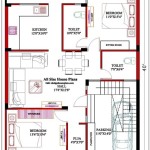Affordable Housing Plan Kenya
Kenya's rapid urbanization and population growth have exacerbated the demand for affordable housing, creating a significant deficit. The government has recognized this challenge and launched the Affordable Housing Program (AHP) as a key pillar of its Big Four Agenda. This initiative aims to provide decent and affordable housing to a wider segment of the Kenyan population, contributing to economic growth and social equity.
Key Objectives of the Affordable Housing Program
The AHP strives to achieve several key objectives:
- Constructing 500,000 affordable housing units by 2022 (initial target).
- Creating employment opportunities in the construction and related sectors.
- Stimulating economic growth through increased investments in housing.
- Improving living standards and promoting social inclusion.
- Facilitating access to affordable mortgages and financing options.
Strategies for Achieving Affordability
Various strategies are employed to ensure the affordability of housing units under the AHP:
- Utilizing innovative construction technologies to reduce building costs.
- Partnering with private sector developers to leverage their expertise and resources.
- Providing subsidized mortgages and financial incentives to potential homeowners.
- Streamlining the approval processes for housing projects to reduce delays and costs.
- Making public land available for the development of affordable housing projects.
Challenges Facing the Affordable Housing Plan
Despite the ambitious goals, the AHP faces several challenges:
- Access to affordable land in urban areas remains a significant constraint.
- High construction costs and fluctuating material prices impact project viability.
- Limited access to financing for low-income earners hinders homeownership.
- Ensuring the quality and durability of constructed units is crucial for long-term sustainability.
Financing Mechanisms for the AHP
The AHP utilizes diverse financing mechanisms to support its implementation:
- Allocation of funds from the national budget.
- Public-private partnerships to attract private investment.
- Establishment of the Kenya Mortgage Refinance Company (KMRC) to provide long-term funding to mortgage lenders.
- Introduction of the Housing Fund Levy, a mandatory contribution by employed Kenyans towards the program.
Role of Technology in the AHP
Technology plays a vital role in enhancing efficiency and affordability within the AHP:
- Adoption of prefabricated construction methods to reduce construction time and costs.
- Use of Building Information Modeling (BIM) for improved project management and design coordination.
- Online platforms for application and allocation of housing units to enhance transparency and accessibility.
Social Impact of the Affordable Housing Program
The AHP is expected to have a significant social impact on Kenyan communities:
- Improved living conditions for low and middle-income families.
- Reduced urban slums and informal settlements.
- Enhanced access to basic amenities such as water, sanitation, and electricity.
- Empowerment of women and youth through employment opportunities in the construction sector.
Government Partnerships and Collaboration
The success of the AHP relies heavily on collaboration between various stakeholders:
- Partnerships with county governments to identify suitable land and facilitate project implementation.
- Collaboration with private sector developers to leverage their expertise and resources.
- Engagement with financial institutions to provide affordable mortgage products.
- Collaboration with community organizations to ensure the program’s responsiveness to local needs.
Future Directions for Affordable Housing in Kenya
The AHP represents a significant step towards addressing the housing deficit in Kenya. Continuous evaluation and adaptation of the program are essential to ensure its long-term effectiveness and sustainability. Exploring further innovative financing models, promoting green building practices, and strengthening community participation will be critical for the future success of affordable housing initiatives in Kenya.
Monitoring and Evaluation of the AHP
Robust monitoring and evaluation frameworks are necessary to track the progress and impact of the AHP. Regular data collection and analysis will inform policy adjustments and ensure accountability in the implementation process. Transparency in reporting and public dissemination of findings are crucial for maintaining public trust and confidence in the program.

Of The Affordable Housing Houses By Government Kenya Buykenya

Government S Affordable Housing Model Is It Feasible A Result Based Financing For Achieving

Boost For Kenya S Affordable Housing Plan As World Bank Approves Sh25 Billion Loan Mwakilishi Com

Profit Making Idea Affordable Housing Developments In Kenya

Kenya Needs 2 Million More Low Income Homes Building Them Would Boost Its Economic Growth

Skepticism And Hope Defines State S New Low Cost Housing Plan

Residents Urged To Support Affordable Housing Programme Kenya News Agency

Affordable Housing Plan Can President Ruto Deliver The Standard Evewoman
Kenya S Push For Affordable Housing Is Creating Opportunities Despite Barriers

The Elusive Quest For Affordable Housing In Kenya Construction Showcase








